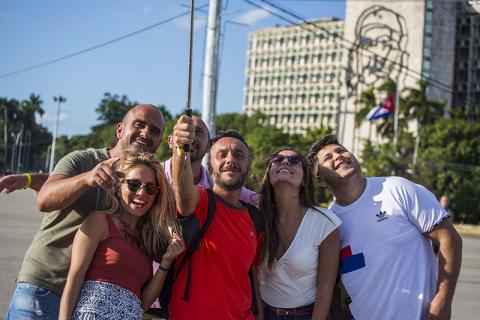In the 1960s the US State Department produced a document that reflected the strategy to follow in Cuba. It said that in a subtle way they should provoke hunger, misery and desperation among the people to push them to rebel and overthrow the government.
That has been the guide to US policy since Eisenhower to date. First they stopped buying the sugar, then they refused to sell it oil, then the Embargo came and later its internationalization, with a law that punishes companies from third countries.
Two presidents realized that only by doing something different could a different result be obtained. In the James Carter and Barack Obama periods, bridges were built to move toward more normal relations between the two nations.
What came after them – Ronald and Donald – was a violent correction of course, redirecting efforts to attack the economy of ordinary Cubans, to do what the armed opposition, the CIA organized invasion and dissidence had not have been able to do.
Every time Cuba finds ways of financing, campaigns to destroy its sources of income begin. The sabotage of Cuban medical missions abroad is a good example; the US even offered doctors express-visas to tempt them to abandon their work.
Now the target seems to be tourism, a fast moving locomotive that can bring growth to other economic sectors as well. In June Trump forbade doing business “with the military” well aware that it is in the tourism industry where Gaesa (the business group of the Revolutionary Armed Forces) has its greatest weight.
After Hurricane Irma, the State Department launched a travel alert, recommending that US citizens not visit the island due to allegedly dangerous health situations, problems with water and power outages.
Such a recommendation should be mocked when Cuba’s electricity recovery was faster than that of Florida and Puerto Rico, drinking water came to households along with electric power, and the health system is best trained to deal with natural disasters.
The next step was to warn visitors that some US tourists would have suffered “acoustic attacks”, meaning that the Cuban government would be shooting itself in its own foot, triggering actions to curb the growth of tourism to the island.
The famous acoustic attacks denounced by CIA agents in Havana have no basis in facts. They do not present names of victims, do not show medical reports and they were supposedly made with a fantastic weapon that according to the New York Times violates all the laws of physics.
The plan seems to be generating uncertainty, to spread fear and reduce the number of US tourists, which was the fastest growing group. The US market could have doubled the total number of visitors in a few years.
Eduardo Galeano wrote decades ago that “Cuba is judged as if it has not been suffering a continuous emergency situation for more than 30 years. An astute enemy, no doubt, that condemns the consequences of its own acts. ”
However, it is up to the Cuban authorities to find cracks in this blockade and ways to respond effectively to harassment, minimizing the level of harm. Are they doing it today? Will the Ministry of Tourism (Mintur) respond intelligently to sabotage?
A person linked to the Cuban intelligence service told me a few days ago that the “acoustic attacks” were totally false but, he added, that the campaign took them by surprise.
The attack on the tourist industry is so obvious that it should surprise no one. Mintur must be dedicated to the reactivation of all the tourist centers before the beginning of the high season but it will not be enough to fill the hotels. To counter the campaign against it from Washington, Cuba must “show” that it is ready.
I was in Varadero 15 days ago and Irma’s passing is practically not noticed. Meanwhile, Havana, which bounces back from hurricanes, has all its services restored. The malecon seawall is once again a lover’s couch and fisherman’s office. And Old Havana is younger than ever.
The hurricane even multiplied the amount of sand on Cuban beaches but all this has to be “shown” to the world so that the images of the resurrection demolish Washington’s campaign to crucify tourism in Cuba.


Spread the word